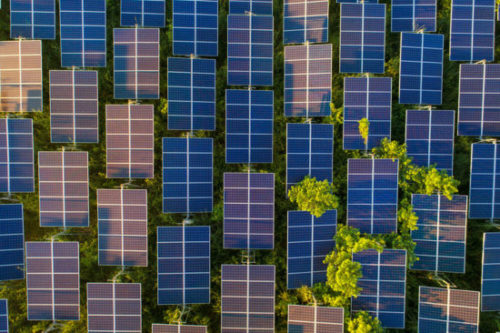

India has a set course to achieving its ambitious 100 GW solar by 2022 target. If it gets to it there is a clear demand on land that will need to be met, close to 2500 sq. km by estimates. With each MW of installations requiring close to 5-7 acres and the current capacity standing at 24 GW, nearly 500 sq. km. of land is now under solar panels and to reach the target an additional 1,500 or 2,000 sq. km. will be needed. The Government, however, has maintained that most of this land is barren and unfit for farming, but is now thinking about making a provision, as fresh and is acquired for upcoming plants.
Interestingly, while information on its success or feasibility is yet to be made available, the Delhi government, where land, barren or agricultural is extremely difficult to get, did become the first one to have a provision for solar installations at a height to ensure use of land by the farmers.
With only a matter of time before agricultural land goes under, the Ministry of New and Renewable Energy (MNRE) has revealed that it’s working on a workaround. “We are actively working on a policy to ensure that will give solar companies an option to have legal agreements with farmers wherein farming can continue if the height of the panels is increased,” Gopal Krishna Gupta, joint secretary at the MNRE, told reporters at the recently concluded COP24 in Katowice, Poland. “We are simply giving [solar companies] an additional opportunity.” He further added that the discussions were nearing their close, and that “we can expect it very shortly.“
“Now we are thinking of increasing the lease to Rs 30,000 per acre. Going forward, we will only lease the land and not acquire it,” Gupta said. “The farmers will continue to own the land. They can set up solar parks or tie up with developers.” Our job in this setup will be to “ensure that farmers are not fleeced by anyone”.
[related_post]
If private companies would be willing to take that extra cost of installing the panels at a platform, is unclear at this moment. Recently, in an attempt to push its solar capacity and fulfilling its RPO, The Haryana government announced that it plans to install solar power plants on land they will procure from Gram Panchayats and we had suggested a similar approach to be taken if the land obtained is agricultural and/or fit for farming. Taking precedence from the Delhi Government’s ‘Mukhyamantri Kisan Aay Badhotri Solar Yojana’ which was announced back in July. The scheme had a special provision mandating the installation of the solar systems at an elevated platform 3.5 meters from the ground to not hinder with farming practices.
Upendra Tripathy, director-general of the International Solar Alliance, pointed to Rwanda as an example. “Here, the farmer is allowed to grow fodder under the panels and is paid for the cleaning services. The locals are also paid to bring water and clean the panels.”
Sustainability-focused venture builder Sustain Labs Paris (SLP) has collaborated with Posterity Institute and launched ‘SLP…
Japan’s trading giant Sumitomo Corporation has signed an MoU with Malaysian renewable energy conglomerate reNIKOLA…
Renewable energy conglomerate TotalEnergies has signed a Sale and Purchase Agreement (SPA) with HitecVision, a…
Nordic energy company Gasum has inaugurated its newest and largest biogas plant in the Swedish…
The Central Government has approved an additional allocation of 2.8 million tonnes of Food Corporation…
1. The mandate for blending Compressed Biogas (CBG) with natural gas has come into effect…